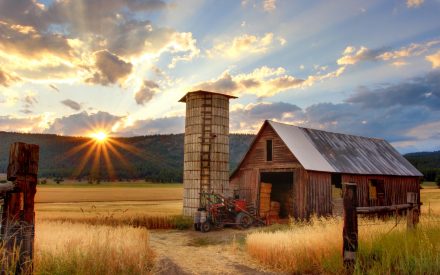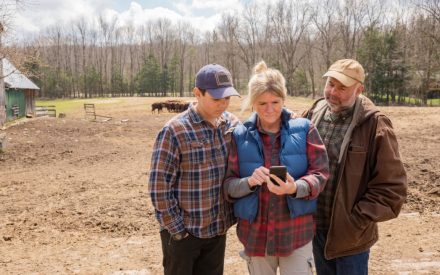Business strategies are practical actions that communicate how a business plans to reach its goals. Thinking strategically about the farm business as a whole helps determine emerging themes, issues, patterns, and opportunities. This allows for proactive management and helps maintain more control over what happens to the farm. Goals are of little value if there is no tactical plan for achievement and no implementation with ongoing monitoring and adjustment opportunities.
Develop three business goals
Each farm should develop at least three business goals. These are the basis of the farm planning process and should be kept in mind when decisions are being made. Once developed, use them to determine how you get to where you want (and need) to go. This begins by assessing the current farm situation and focusing on worthwhile issues to address.
Complete a SWOT Analysis
SWOT analysis, a process to determine strengths, weaknesses, opportunities and threats, is one way to establish where you are now and what you have to work with. It helps establish benchmarks for the farm’s current situation so that there is something to measure against moving forward to see if the farm is moving in the right direction. This process also helps you identify strategies to get there.
To conduct a SWOT analysis, the farm leadership team identifies internal strengths and weaknesses and external factors that affect opportunities and threats to the business. The objective of this process is to capitalize on strengths and eliminate or minimize the impact of weakness. It is a profit-seeking and risk mitigation tool.
Identifying internal strengths and weaknesses
The first step to a SWOT is to identify internal strengths and weaknesses of the farm. The strengths are those that give an advantage or opportunity and weaknesses those that stand in the way or limit what the farm can do. Use this as an opportunity to reach out to people within and outside the farm to have a casual conversation about what the farm does well and what it could improve on. Gather feedback on others’ perceptions, and compile industry benchmarks to measure the farm against. It is helpful to rank these in terms of their level of importance to your operation’s competitive advantage.
It is also worth looking at how the business has performed in the past (during good times and bad). Look at the financial analysis measures from the last five years, how business decisions are made, and how the farm has been managed. This is the time for an honest self-appraisal.
Recognizing external opportunities and threats
The second step in a SWOT is to look at external opportunities and threats to the farm. This includes the general condition of the economy (and how it affects the business), input and commodity prices (and trends), federal and state rules and regulations, industry trends and changes, and competition.
Creating strategies or action steps
The final step and most important part are pulling it all together. Creating a list does not do any good unless it is put to work. Use the SWOT to create strategies or action steps to address opportunities and threats by taking advantage of strengths and minimizing or eliminating the impact of weaknesses.
A helpful way to do this is to look for the intersections of strengths, weaknesses, opportunities, and threats in order to maximize potential and mitigate risk. Identify opportunity-strength strategies, opportunity-weakness strategies, threat-strength strategies, and threat-weakness strategies. Strategies that show up more than once might be areas to focus on and prioritize higher.
A comprehensive SWOT analysis helps a farm acknowledge and be responsive to opportunities and threats in the current business environment. The business strategies derived from the SWOT should be realistic actions that help the farm reach its goals. Spending time developing goals and strategies, helps a farm adapt nimbly in a changing environment and make proactive business decisions.
Getting Started with the SWOT Matrix and Strategy Analysis: Use the worksheet below to analyze the internal and external factors affecting the farm business by identifying strengths, weaknesses, opportunities, and threats and using them to identify strategies to help reach your goal/vision for the future.



 Assess your Farm Business using a SWOT Analysis
Assess your Farm Business using a SWOT Analysis Strategic Thinking
Strategic Thinking What is strategic thinking and how can you use the strategic planning process to craft your farm’s future?
What is strategic thinking and how can you use the strategic planning process to craft your farm’s future? Establishing Your Values and Purpose – Strategic Thinking for the Farm Business
Establishing Your Values and Purpose – Strategic Thinking for the Farm Business


